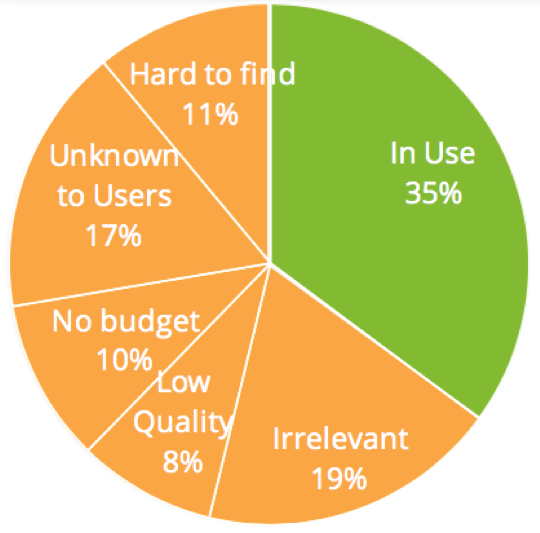Brands
The Problem That’s Quietly Sabotaging Your Marketing Budget
The brainstorming process always begins with promise. People sit around a conference room table kicking around potential ideas, and everything seems plausible.
Let’s create an infographic to show off our recent study, says the ambitious manager.
Sounds good, says the eager junior marketer.
Even though the project begins with the best intentions, challenges start to get in the way. Deadlines are pushed, messaging changes, another stakeholder doesn’t like the project. Things go wrong, and the once promising infographic dies in development. In large organizations, it’s even possible for completed content to sit unused because of bad communication.
At some point, your company will create content that never gets used; that’s a fact of business. That wasted content may even be out of your control.
But teams shouldn’t be complacent about content projects gone wrong. Every hour spent on a wasted piece of content adds up. When you account for the time of all the employees involved, the cost of software used to create the content, and the opportunity cost of not doing something else more productive, wasted content can be a massive weight on a team’s budget.
According to B2B analyst firm SiriusDecisions, 65 percent of content never goes public because it is either unusable (37 percent) or unfindable (28 percent). If you dissect these numbers to try to understand what’s causing these issues, the pie chart looks something like this:

Source: SiriusDecisions
There’s one buzzword at the root of most of these problems: alignment. Somewhere along the way, the creative process breaks down because of organizational silos. Perhaps the content team doesn’t understand customer pain points, so they create sales enablement content that doesn’t fit with what salespeople need. Or the content team produces an article for customer success, but customer success doesn’t have an easy way to access it.
This lack of organizational alignment is endemic. Seventy percent of senior marketers describe their content process as “middling” or worse, according to a recent Contently survey. SiriusDecisions reports that enterprise B2B organizations spend roughly twice what they think they do on content. When you consider that roughly 30 percent of a brand’s marketing budget goes toward content—and that these brands are producing more content than ever to meet digital demands—it’s clear that marketing teams are making a very costly mistake.
In its study “Establishing and Enriching the Content Supply Chain,” CMO Council summed up the issue well: “While content is the backbone of nearly every aspect of the customer journey, organizations are still failing to give it the attention it deserves.” Seventy-five percent of marketing teams don’t have a formalized approach to the content ecosystem. And while 98 percent of marketers believe “having and following” a content strategy is “important for content marketing success,” only 37 percent have a documented strategy.
Teams shouldn’t be complacent about content projects gone wrong.
So what’s the solution to avoiding wasted content?
For one, enterprise companies need to consider changing the way they create content as part of their organization’s larger digital transformation. Producing work ad hoc on Microsoft Word or Google Documents won’t cut it.
Teams also need to develop a framework for creating and distributing content to the right audience, both internally and externally. That means setting data-driven goals, consistently reviewing what works and what doesn’t, and using an agile approach to strategy. If you’re producing sales enablement content, for instance, you’ll want to track what content leads to converted opportunities. You could also refresh evergreen content so it’s readily available for quick and easy updating should your strategy change. Most of all, teams need a centralized location to manage every facet of their content process.
Some companies may struggle to adapt to this new reality. But for savvy businesses to get ahead, now’s the time to stop wasting time and money on unused content.
Image by Unsplash / CC ZeroGet better at your job right now.
Read our monthly newsletter to master content marketing. It’s made for marketers, creators, and everyone in between.




